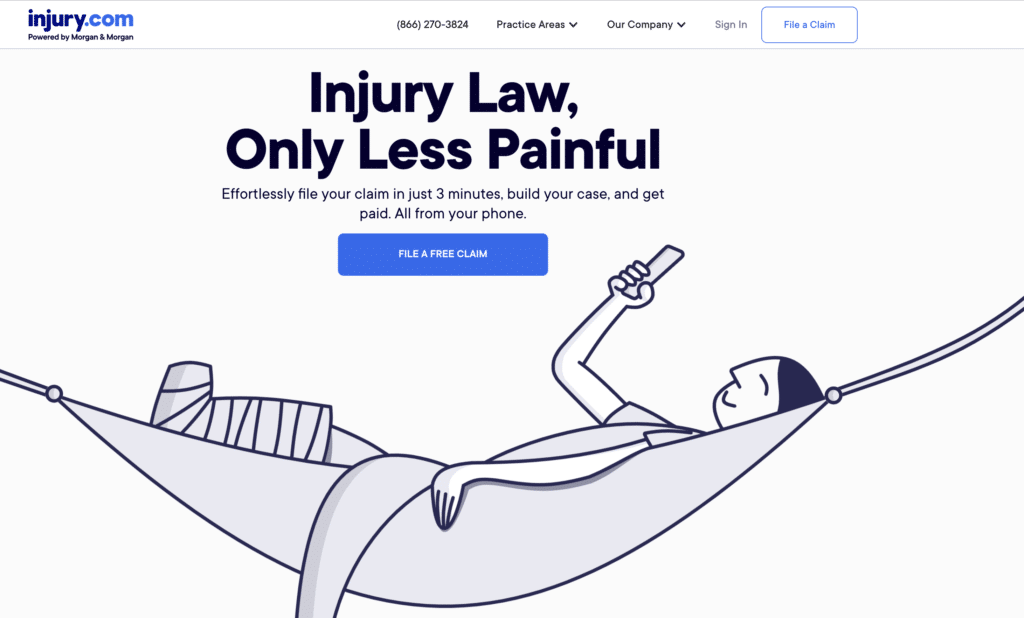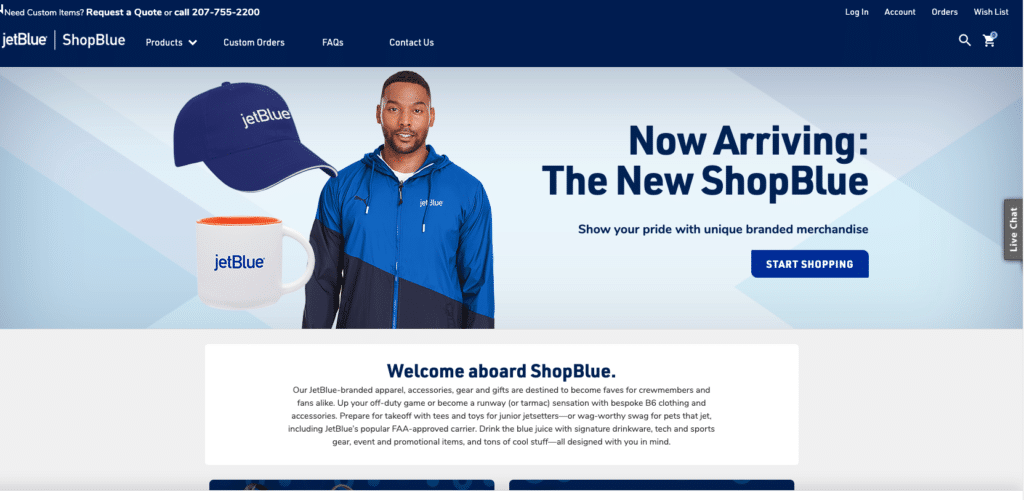Microsite Fundamentals
Making the choice of whether to pursue a microsite is one of the hardest strategic decisions a business will face in their digital growth planning. In this article we’re going to walk you through how to approach the difficult decision making process and arm you with the tools necessary to make such a decision.
What is a microsite?
A microsite is a website spun with a narrower intent or target than a full featured site, sometimes as narrow as a single page. Simple as that. Now, whether building a microsite is the correct business solution to a business problem is a much, much more complicated question! When answering the question of whether building a microsite is the right approach many factors must be weighed including the up-front design and development costs of a new site, opportunity cost of concentrating on this auxiliary site as opposed to the core brand property(s), long-term cash and thought capital required for a site bifurcation, brand continuity questions, and more. In this article we’ll dive a little deeper into how you might weigh the pros and cons of a microsite approach and make a final decision on whether the strategy is right for your objectives.
Microsite vs Landing Page
This is a bit of a ‘gotcha’ moment. Depending on your use case, a microsite can be nothing more than a landing page. However, in the typical scenario there are a few key differences between the two:
- A landing page is typically geared towards a single acquisition source and campaign, whether that be an email newsletter, OOH campaign, or digital marketing effort. A microsite, on the other hand, is more generally built around a business unit, service area, or product line.
- Microsites tend to be more all-encompassing than their landing page counterparts. Put differently, a microsite might very well include landing pages but a landing page will not include a microsite.
Deciding on a microsite strategy
Microsites are the perfect example of where a ‘measure twice cut once’ mindset is invaluable. Not only is the direct investment in a microsite non-trivial, the indirect costs of such a decision reverberate through your future SEO, paid media, and branding strategy. In short, before deciding on a microsite approach, I highly recommend ruling out solutions built on your current site (or family of sites).
Benefits of a microsite
The benefits of a microsite really boil down to two fundamentals: specificity and flexibility. Let me elaborate. Microsites offer specificity by honing in on a smaller slice of the universe of products or services offered by your brand and providing the foundation for building content and strategy around just that slice. Take for example a law firm – let’s call it Bob Loblaw’s Bird Law Attorneys – specializing in a number of practice areas including personal injury and criminal defense. While it’s perfectly reasonable to include pages and content for these disparate practices on the same site, there are some powerful reasons why a microsite approach might be better.
Specific messaging tailored to the product or service
Personal injury engagements tend to be contingency based. That is, if the lawyer representing you wins the case or negotiates a settlement then they are entitled to a percentage of the recovered balance. Criminal defense cases on the other hand are exclusively hourly or retainer based relationships. Why is this important? It’s a well established rule of law firm web design that inclusion of contingency language (especially the golden “free” messaging) is one of the most important factors in boosting conversion rate on your website. If your firm accepts both contingency and non-contingency fee cases through a single site, though, this becomes tricky at best. Of course you’ll still have the option to include “free” copy on the personal injury specific practice area page and omit it on the criminal defense one, however this strategy forces the exclusion of this crucial messaging on high value global pages like the homepage and contact us pages. This is an unacceptable tradeoff for many law firms.
SEO Benefits of Wider Sitemaps
A microsite spun up around a single product or service is the ultimate vehicle for a hyper-specific content strategy. Site directory structure and internal linking in these instances can be extremely precisely targeted for the set of terms being hunted and a whole site built around these terms means the opportunity for unbounded content expansion. When building broader sites with wider focus, this type of specificity is extremely difficult due to the need to appeal to a much wider range of audience. It is important to note, however, that there are some significant SEO downsides to a microsite approach. We’ll circle back to this in a bit as we learn more about the potential pitfalls of a microsite approach.
Flexibility of Tech Stack
A famous axiom says, “when all you have is a hammer, everything looks like a nail.” For all practical purposes, when your core website has been around for a while there isn’t the opportunity to use anything but a hammer for new feature development (important technical note: this is explicitly not the case if your site is composed of microservices). If it’s a WordPress site, updates will be to your theme. If it’s a Python project, updates will be written into your Python codebase. And so on and so forth. A microsite provides the backdrop for opening up the toolbox. Even if a full framework change isn’t in the cards, at a minimum your new site will be built on the most modern web technologies which means better developer experience, smaller build sizes, and faster code execution, all resulting in a snappier user experience.
Potential Microsite Pitfalls
Sometimes it’s tempting to view microsite strategy through rose-colored glasses. However, for all the benefits of a microsite approach, there are equal parts pitfall that need to be considered before pulling the trigger.
Backlink and Content Development “Sophie’s Choice”
Grow your brand or grow your microsite. That’s the sophie’s choice you need to be prepared to make on a day-to-day basis when building a new microsite. With limited time and resources, you’ll need to sacrifice one to preserve momentum for the other. Let’s take this a step further and assume we have no resource constraints. In other words, it’s carte blanche on backing each property with a team and resources to grow both at the same time. Unfortunately even this dream scenario won’t be enough to escape the difficult decisions caused by having both properties in place.
Let’s revisit our law firm example – BLBLA – with practice areas for personal injury and criminal defense. Our firm has its core site at blbla.com and plans to spin off the criminal defense portion of the practice into a separate microsite at CriminalDefenseExpertAttorneys.com. Each property will have its own team of SEO’s and content writers assigned to manage the growth of the domain. For some scenarios, this arrangement works flawlessly. Criminal defense blog posts are written weekly on CDEA while BLBLA focuses mostly on pushing out content for the personal injury practice. However, let’s assume the firm wins a criminal defense case with a lot of publicity around it. Sounds ripe for some backlinks! But…which brand should the links go to? On the one hand, CDEA is our primary criminal defense outlet so it certainly makes sense that we’d want to boost the relevancy of that site for criminal defense terms. On the other hand, BLBLA is our core brand so backlinks from reputable outlets will drive up our DA, making pages published around personal injury more likely to rank highly for key terms. This example illustrates the crux of the problem. Even in the ideal scenario, negotiating growth of microsite and core brand SEO is a hard balance to strike.
Branding opportunity cost
For every minute and dollar spent building and marketing a separate brand, that’s time and money not spent improving the posture of your core brand. Even if the new microsite is co-branded with your primary brand name and logo, being rooted on a different domain is enough to undercut branding momentum.
How to create a microsite
Once you’ve decided that a microsite approach is the best path towards achieving business objectives, the next step is to get that puppy launched!
Choosing a technology and developer
When choosing a tech stack for your microsite, it’s important to consider the underlying purpose of your site. Sometimes this might mean using the same stack as your primary site while other situations call for a differentiated approach. My personal recommendations, broken out by microsite purpose, are below:
| Content heavy | WordPress |
| Ecommerce | Shopify |
| Ultra-fast landing pages | Jekyll or Hugo |
| SPA’s | Express + React or Vue |
| Custom Application | Django + Python |
Like the tech stack, your choice of implementation team need not be the same as the primary domain. While using a common development team across projects is the right decision for many scenarios to avoid juggling vendors, sometimes using a different team has the benefit of preserving focus on core responsibilities. If you’re a law firm looking for a team to help build out a microsite for a new case type or practice focus, business unit, or user journey, we’re experts at building and growing law firm microsites.
Connecting your microsite and core website
Unfortunately there’s no one-size-fits-all answer to the question of connecting your microsite and core site. For some scenarios, the two are intentionally decoupled and having an explicit connection undermines the effectiveness of the microsite. For instances where the microsite has a purposeful connection to the core brand, some options for connecting the two include:
- A co-branded logo (e.g. “Powered by <YOUR BRAND>”)
- “Family of sites” style links in the footers of both sites
- Dual-serving paid ads for your core site and microsite
- Linking in the content of posts and pages. Use appropriate rel tags based on your SEO objectives for the microsite. For example, if the purpose of your microsite is not SEO, I recommend using a nofollow rel when linking to it from your main site.
Microsite examples
Legal microsite examples
Here are a few examples of law firm microsites in the wild. You’ll notice some have been spun up around practice areas whereas others encompass unique user experiences and conversion paths and still others represent distinct business units or departments within a firm.
Fraud Fighters – FraudFighters.net is a microsite used by the law firm Tycko & Zavareei to hyperfocus on the Qui Tam (whistleblower) portion of their practice

Business Trial Group – BusinessTrialGroup.com is a microsite utilized by Morgan & Morgan for the contingency fee commercial litigation team

Injury.com – Injury.com is Morgan & Morgan’s attempt at a self-service legal claims tool

Other microsite examples
Pfizer Clinical Trials – PfizerClinicalTrials.com is a microsite used by Pfizer providing information and resources about clinical trials being run by the pharmaceutical giant.

JetBlue Shop – ShopJetBlue.com is an ecomm microsite used by JetBlue to sell corporate swag and merchandise.

—
As business leaders, it’s always important for us to understand that decisions aren’t made in a vacuum. Whether a microsite makes sense for your brand is a question only you can answer. My hope is that this post has given you some tools and fodder for coming to this answer in an informed way, fully understanding the benefits and constraints of the strategy.
🇺🇦








